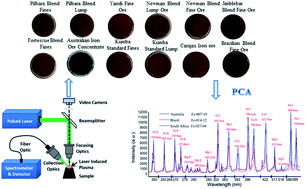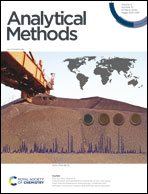Classification and identification of brands of iron ores using laser-induced breakdown spectroscopy combined with principal component analysis and artificial neural networks
Abstract
Identification and classification of imported iron ores according to their production countries and brands are required for quality control and safety in the iron ore trade. In this work, a method based on laser-induced breakdown spectroscopy (LIBS) combined with principal component analysis (PCA) and scaled conjugate gradient (SCG) algorithm in an artificial neural network (ANN) was used to identify 138 brands of iron ore samples from Australia, Brazil and South Africa. Quadratic fitting, Savitzky–Golay polynomial smoothing and Multiplicative Scatter Correction were applied to preprocess spectra in combination. The pretreatment data remove the noise and enhance the sensitivity of the spectra. PCA was employed to reduce the dimensionality of the data. In particular, the loadings for PC1 and PC2 included Fe, Na, Ca, Mg and Al lines. Among them, the first 3 were the most important with the largest contributions to the result of classification. With the developed PCA-ANN model, the accuracy rates of classification according to the production countries reached 100% for the validation and test data sets, respectively. With the final brand classification model, after being optimized for the number of neurons in the hidden layer, the accuracy rates of classification reached 99.19% and 99.19%, respectively, for the validation and test data sets.



 Please wait while we load your content...
Please wait while we load your content...